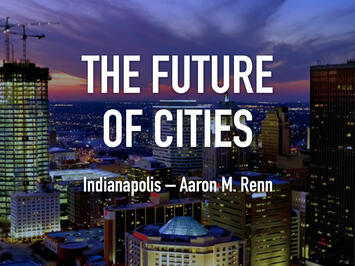
Indianapolis was an unlikely candidate to emerge as a midwestern demographic and economic leader. It is an artificially created city, chosen by fiat as a centrally located capital for the state of Indiana. It is not located on a navigable waterway and had no initial economic raison d’être. It grew to be the largest city in the state, but unlike other Midwest cities such as Chicago, Cincinnati, Cleveland, and St. Louis, it was never nationally prominent apart from its annual Indianapolis 500 automobile race and lacked signature industries. In built form and culture, it was in essence an overgrown small town. Indianapolis’s residential streets looked similar to what one would find in any Indiana small town, and it never had a unique vernacular architecture. There was good reason it was formerly known as “India-no-place.”
This book is being published as a series, with permission of the American Enterprise Institute. Each week a new chapter will be published, with links to each chapter.
Click or tap a link below to read or download each chapter. (PDFs open in new tab or window)
Indianapolis – Aaron M. Renn (new this week)
Aaron M. Renn is a writer, researcher, and consultant in Indianapolis.
Read the Series:
Introduction: Welcome to the Urban Future – Joel Kotkin
I. The Big Picture for Global Geography
American Aspiration is Metropolitan – Ryan Streeter
The Urban Future: The Great Dispersion – Wendell Cox
The Future of the Big American City is Not Bright – Samuel J. Abrams
II. The Variety of Urban Experiences
The Future of Chinese Cities – Li Sun
Africa's Urban Future – Hügo Krüger and Bheki Mahlobo
Recalibrating Expectations: Lessons from Youngstown, Ohio – Sherry Lee Linkon and John Russo












